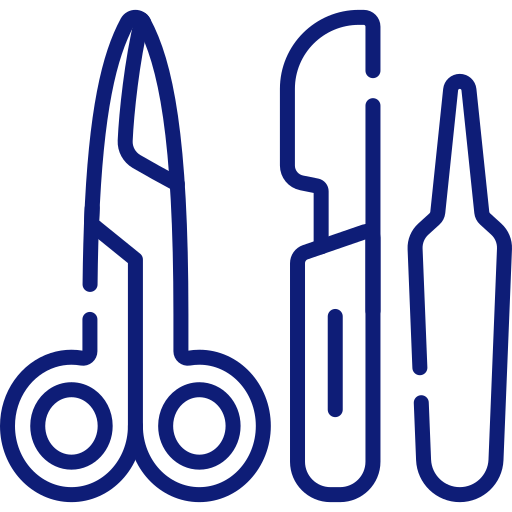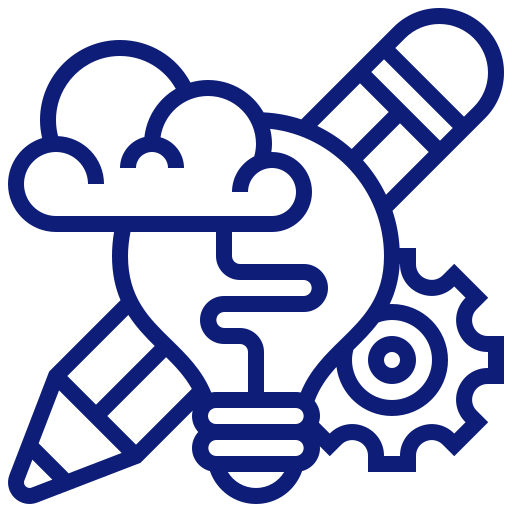Case Study
Siemens standardizes labeling across its global factories to drive new levels of efficiency
Siemens’ labeling-as-a-service solution, powered by Loftware NiceLabel provides centralized labeling that can easily deliver critical real-time labels to highly automated manufacturing and logistics environments.
Background
The Manufacturing Operations Service Delivery department within Siemens has a straightforward objective. The department is responsible for IT for all the systems, infrastructure and architecture that enable Siemens to manufacture products across their factories. Their goal is to provide IT systems and services that perform in as standardized and efficient a manner as possible, applying best practices to make sure things run as they should.
Challenges
Fragmented landscape poses barrier to best practice
One of the areas the group was looking to standardize was on-demand label printing in the factories. However, the Siemens environment at the time made this effort challenging. “Five years ago, the labeling set-up was heterogeneous and complex,” relates Leon McDonnell, Service Delivery Manager, Manufacturing Operations for the Motion Control Business. “We sit within a network of Motion Control factories, and even at our main site there were three different labeling solutions.
More broadly speaking, there were five or six solutions to print labels.” Some solutions were off-the-shelf and others were developed locally and only for specific vendors. Applying best practices was out of the question with the current set-up, as each factory had a tailored solution. There was also a wide range of label and office printers at each factory. “A lot of these factories had been masters of their own domains and followed their own purchasing or hardware approach. You can imagine any variable, and we would have found variants of that variable across the factories,” comments Leon.
Multilingual labels a challenge
As Siemens is an international organization, they need to produce labels in multiple languages. The labeling solutions couldn’t consistently handle Chinese characters and in some cases the designers had to transform them into pictures. At one point, they had 250 pictures they had to maintain. Having to maintain a variety of hard-coded layouts slowed down the label change process and placed a heavy burden on the IT department. In the worst case, they would have to alter hundreds of hard-coded layouts manually in the event of a change request. Factories hard-coded the same label format several times in order to accommodate the requirements of the different systems and printer brands they had in place.
Lack of version history made quality control difficult
With the legacy systems they had in place, factories didn’t have a proper change history. If they needed to go back and locate the previous version of a label this had to be done manually, for example by creating multiple versions of the same layout file in order to keep track of the revisions. Should an error in a label occur, the subsequent investigation was both time-consuming and labor-intensive, as it was virtually impossible to identify where in the label production process the error had occurred.
A lot of these factories had been masters of their own domains and followed their own purchasing or hardware approach. You can imagine any variable, and we would have found variants of that variable across the factories.
Leon McDonnell
Service Delivery Manager
Solutions
To achieve the desired level of standardization and flexibility, Siemens would need to implement a centralized platform for their label production and printing that could be rolled out across all factories.
NiceLabel offers a single solution that meets all requirements
Siemens decided to use the NiceLabel label
management system to integrate with their PLM, MES and ERP systems and roll out a standardized label production and printing set-up for the Motion Control factories. They were able to accomplish this with a centralized instance of the NiceLabel label management system. The NiceLabel label management system is deployed on a private Siemens Cloud. A single server hosts the NiceLabel Document Management System (DMS) and a handful of servers host the NiceLabel integration system. Some plants that have poorer internet connectivity, such as in China, have decentralized production servers and occasionally synchronize with the centralized solution.
A label designer that empowers business users
All labels that are connected to the bill of materials (BOM), such as product identification labels, are initially designed using Siemens’ CAD software, NX Design, and stored in Teamcenter, Siemens’ PLM system. NX Design also creates an XML file that is imported into the NiceLabel label designer. This means that 70% of the label design work is done before any design work is started in the NiceLabel designer. All non-BOM related labels are designed by business users from scratch using the NiceLabel label designer. The label designer’s intuitive interface means that business users can create and change labels without IT assistance. They can easily create labels and deploy these label templates across factories.
NiceLabel integrates seamlessly with PLM, MES and ERP
NiceLabel’s integration system is connected to Siemens’ ERP system (SAP) and various MES at the factory level. Although Siemens factories use different solutions for their MES, NiceLabel allows for the use of universal label templates that can be printed from any of the business systems. As a result of these flexible label templates, factories have to maintain fewer template variations, process fewer change requests and enjoy improved label consistency and compliance. The level of integration with Siemens’ other business systems has also enhanced productivity. Whereas under the legacy integration methods labels could take eight seconds to print, that time has been reduced to an average of 300 milliseconds to print each label. By implementing NiceLabel’s label management system, Siemens has been able to reduce the overall complexity of its internal business applications. Prior to NiceLabel, the business applications had to support multiple printers. Now they can handle business rules and logic using the label management system’s Automation module. The Service Delivery group has also been able to maximize the speed of implementation, while minimizing deployment costs.
We’ve gone from 1 site and 20 printers as part of a pilot 5 years ago, to 22 sites and 1,200 printers today with continued rollout. The largest site prints 150,000 labels a week on 200 printers. And it’s all driven via the NiceLabel integration system.
Michael Buchmann
Solution architect for IRIS
Return on investment in less than four months
Prior to deciding to purchase NiceLabel, Siemens conducted an internal analysis estimating that the return on investment from software standardization and IT savings would be less than four months. Now that they have implemented NiceLabel, they have met their original ROI expectations, and they continue to experience substantial savings on a daily basis due to printing process improvements and added flexibility in hardware procurement. The initial installation and standardization effort worked so well that it was regarded as best practice by other business units. The group then decided to offer NiceLabel as a service to other factories within the vast Siemens manufacturing landscape.
Results
IRIS: Labeling-as-a-service across Siemens
Once they realized the potential of the technology, the group offered a new service called IRIS with NiceLabel LMS as a core component to other business units. “Iris was a messenger of the gods in Greek mythology. It’s associated with something being completely transparent and fast, which we thought was an appropriate name for what we wanted to accomplish: delivering critical real-time labels to highly automated manufacturing and logistics environments,” states Michael Buchmann, the solution architect for IRIS. And the service has proved to be a popular one. The service is already in use across 22 factories in 4 different business units across 6 countries in Europe and in China. They are also working with numerous other businesses to establish the business case for applying it elsewhere."
NiceLabel’s scalability makes it all possible
“We’ve gone from 1 site and 20 printers as part of a pilot 5 years ago, to 22 sites and 1,200 printers today with continued rollout. The largest site prints 150,000 labels a week on 200 printers. And it’s all driven via the NiceLabel integration system,” states Michael. The scalability has also meant that Leon’s group can offer different levels of service depending on the business unit in question.
“Our standard service uses the centralized private cloud solution shared across Siemens. But for customers who are demanding guaranteed low latency or high availability requirements, we can offer a local production server solution for large manufacturing sites and for areas with poor internet connectivity,” states Leon. Being able to adapt the solution to the needs of the various business units and factories is a clear benefit for Siemens and one of the main reasons for the Labeling-as-a-service model being so widely adopted within the organization.
“One of the success stories we’ve had involved one of the warehouses. They wanted to use a wireless printing device, which would have meant duplicating their printing system. With NiceLabel, they were able to use the same system for desktop and mobile printing. They didn’t have to do all of the investment for duplicating the system, which was a significant savings for them.”
A service with tremendous potential
IRIS labeling-as-a-service has been so successful, that it has been identified as a digital lighthouse service by Siemens Production and Logistics Excellence group. What began as a solution to solve a local problem has now been re-architected, scaled and packaged as a model service offering to bring standardization to label production and printing processes across Siemens’ manufacturing operations. “We’re currently working on a marketing and sales strategy to sell this as a service globally. Right now, we service about 10% of Siemens’ manufacturing estate. But the potential is much greater,” Leon concludes.
With NiceLabel, they were able to use the same system for desktop and mobile printing. They didn’t have to do all of the investment for duplicating the system, which was a significant savings for them.
Leon McDonnell
Service Delivery Manager
- SAP
- Supply Chain






